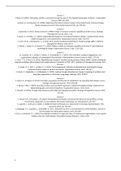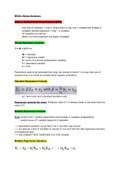Samenvatting
Summary MTC
Lecture 1; Tripsas, M. (2009). Technology, identity, and inertia through the lens of “The Digital Photography Company”. Organization Science, 20(2), 441-460. Lyytinen, K., and Newman, M. (2008). Explaining Information Systems Change: A Punctuated Socio-Technical Change Model, European Jou...
[Meer zien]




